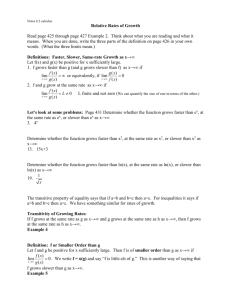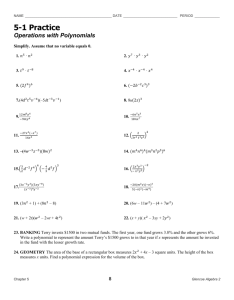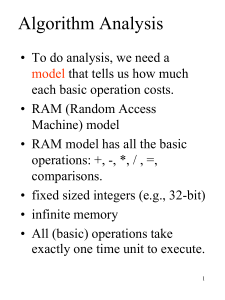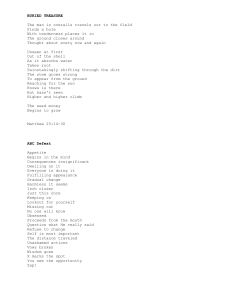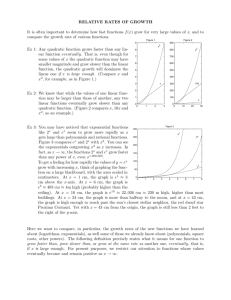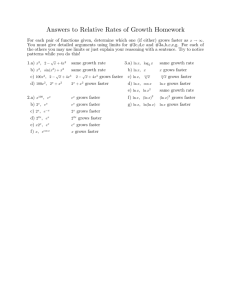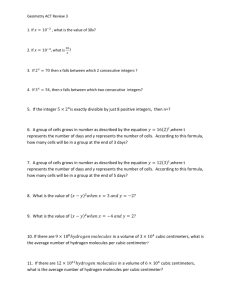9.3 calculus Relative rates of growth
advertisement
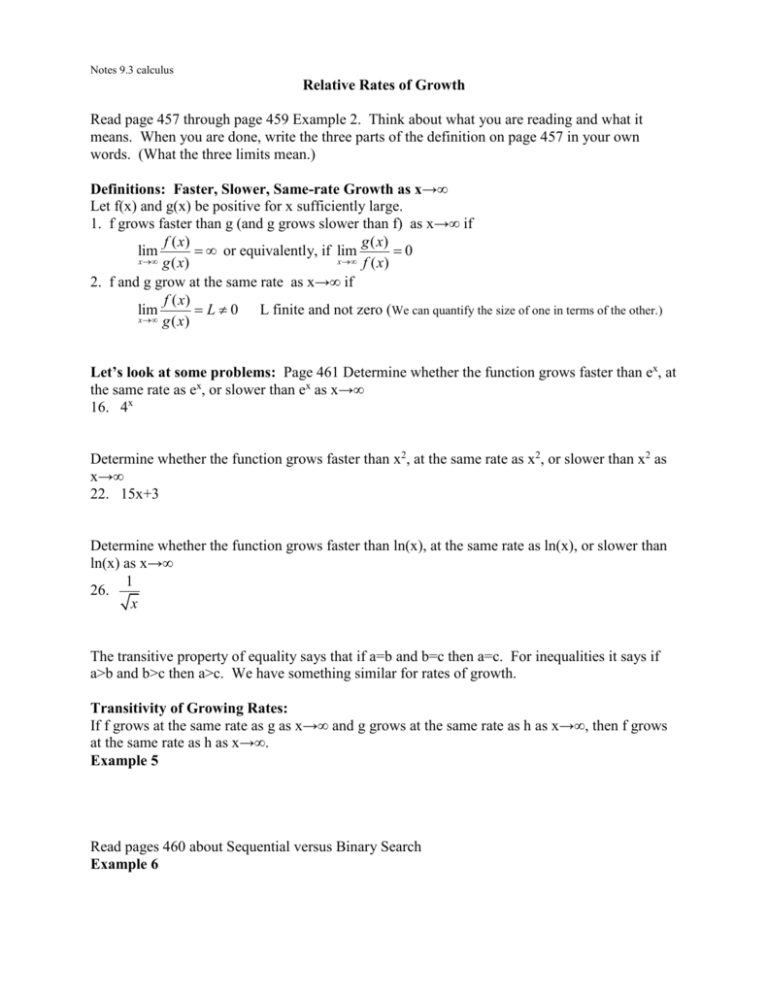
Notes 9.3 calculus Relative Rates of Growth Read page 457 through page 459 Example 2. Think about what you are reading and what it means. When you are done, write the three parts of the definition on page 457 in your own words. (What the three limits mean.) Definitions: Faster, Slower, Same-rate Growth as x→∞ Let f(x) and g(x) be positive for x sufficiently large. 1. f grows faster than g (and g grows slower than f) as x→∞ if f ( x) g ( x) lim or equivalently, if lim 0 x g ( x) x f ( x) 2. f and g grow at the same rate as x→∞ if f ( x) lim L 0 L finite and not zero (We can quantify the size of one in terms of the other.) x g ( x ) Let’s look at some problems: Page 461 Determine whether the function grows faster than ex, at the same rate as ex, or slower than ex as x→∞ 16. 4x Determine whether the function grows faster than x2, at the same rate as x2, or slower than x2 as x→∞ 22. 15x+3 Determine whether the function grows faster than ln(x), at the same rate as ln(x), or slower than ln(x) as x→∞ 1 26. x The transitive property of equality says that if a=b and b=c then a=c. For inequalities it says if a>b and b>c then a>c. We have something similar for rates of growth. Transitivity of Growing Rates: If f grows at the same rate as g as x→∞ and g grows at the same rate as h as x→∞, then f grows at the same rate as h as x→∞. Example 5 Read pages 460 about Sequential versus Binary Search Example 6
